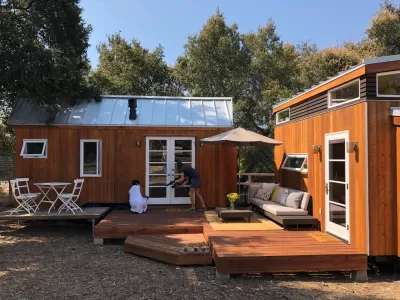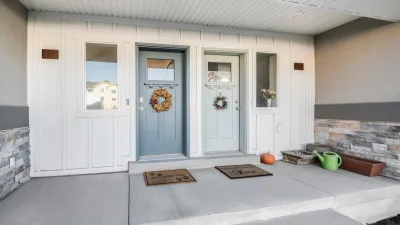While accessory dwelling units have the potential to ease California’s housing crisis, homeowners still find the construction process difficult to navigate.

California needs to boost its housing stock, and advocates say accessory dwelling units are one useful strategy for adding affordable housing units while also providing homeowners with a source of income. John King writes that ADU supporters say the construction could significantly increase the amount of available housing:
CASA, a Bay Area-wide alliance of government, civic and business leaders organized by the Metropolitan Transportation Commission, makes the case that as many as 300,000 of the units could be added to the Bay Area without a noticeable increase in density. This would be a big chunk of the 525,000 housing units that CASA — a sort-of acronym for the Committee to House the Bay Area — says the region needs to build during the next 15 years.
State legislation passed in 2017 made ADU construction easier by easing requirements such as mandated off-street parking. Other state bills in the pipeline would lower impact fees and eliminate minimum lot sizes, and cities and counties throughout the state have also taken steps to streamline the process.
Still, many homeowners say taking on an ADU project often remains a costly and complicated endeavor. And in Portland, Oregon, which has been a leader in promoting ADUs, a huge increase in construction was followed by a leveling off. "This doesn’t mean that new backyard cottages or converted garages aren’t of value. We just shouldn’t ask them to do too much," says King.
FULL STORY: Small solutions for big problem

Alabama: Trump Terminates Settlements for Black Communities Harmed By Raw Sewage
Trump deemed the landmark civil rights agreement “illegal DEI and environmental justice policy.”

Study: Maui’s Plan to Convert Vacation Rentals to Long-Term Housing Could Cause Nearly $1 Billion Economic Loss
The plan would reduce visitor accommodation by 25% resulting in 1,900 jobs lost.

Planetizen Federal Action Tracker
A weekly monitor of how Trump’s orders and actions are impacting planners and planning in America.

Waymo Gets Permission to Map SF’s Market Street
If allowed to operate on the traffic-restricted street, Waymo’s autonomous taxis would have a leg up over ride-hailing competitors — and counter the city’s efforts to grow bike and pedestrian on the thoroughfare.

Parklet Symposium Highlights the Success of Shared Spaces
Parklets got a boost during the Covid-19 pandemic, when the concept was translated to outdoor dining programs that offered restaurants a lifeline during the shutdown.

Federal Homelessness Agency Places Entire Staff on Leave
The U.S. Interagency Council on Homelessness is the only federal agency dedicated to preventing and ending homelessness.
Urban Design for Planners 1: Software Tools
This six-course series explores essential urban design concepts using open source software and equips planners with the tools they need to participate fully in the urban design process.
Planning for Universal Design
Learn the tools for implementing Universal Design in planning regulations.
Caltrans
Smith Gee Studio
Institute for Housing and Urban Development Studies (IHS)
City of Grandview
Harvard GSD Executive Education
Toledo-Lucas County Plan Commissions
Salt Lake City
NYU Wagner Graduate School of Public Service





























